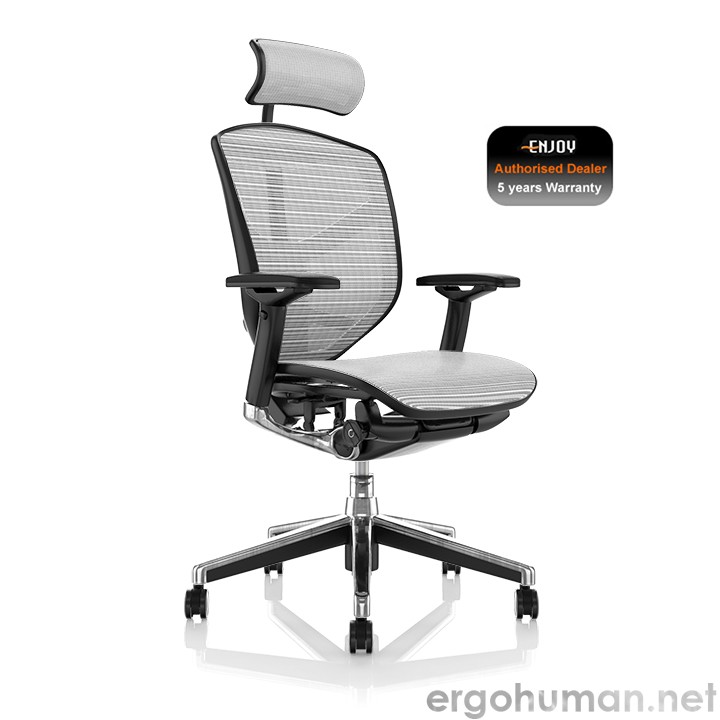Enjoy Ergonomic High Back Mesh Office Chair is designed and made with the total comfort of human-kind in mind. The Enjoy office chair fuses art and science, with flex zones that ensure constant support of back and lumbar, multi-dimensional adjustable arm rests for unparalleled support and a height-adjustable pivoting headrest for full crane support.
The Enjoy was designed specifically for those who are in an office chair for more than eight hours a day, and require “Intensive Use Seating” to keep them comfortable for long periods of time. Esthetics, form and function allow this ergonomic chair to utilize a synchro tilt mechanism with infinite lock, sliding seat, pneumatic height adjustment and headrest all in one very unique ergonomic chair
Enjoy Specification:
Seat Height Control
Seat Depth Adjustment (Seat Slide)
Backrest Tilt Tension Control
Backrest Tilt Angle Adjustment
Backrest Height Adjustment
Armrest Height Adjustment
Armrest Angle Adjustment
Headrest Height & Angle Adjustment
Available in Black Mesh (leather combinations also available) – other colours available to order/please contact us for details
Outstanding 5 Year Manufacturers Guarantee
Delivery 2-3 working days

Enjoy Mesh Office Chair with Head Rest, Orange Mesh
Enjoy office chair conforms to BS 1335-2:2000 Specification for performance requirements and tests for office chairs. Office pedestal seating for use by persons weighing up to 110kg and for use up to 8 hours a day, including type-approval tests for individual components
BS 1335-2 specifies performance requirements and test methods for the structural safety and stability of office pedestal seating when used by persons weighing up to 110 kg, or when used for up to 8 hours a day, including chairs for use with tables and desks higher than those specified in BS EN 527-1.
It also specifies requirements and test methods for type-approval of bases, columns, seat actions, back stems and locking devices.
BS 1335-2 seeks to ensure that the seating will not become a danger or cause injury to users when it is used as office seating in a manner which is foreseeable.

